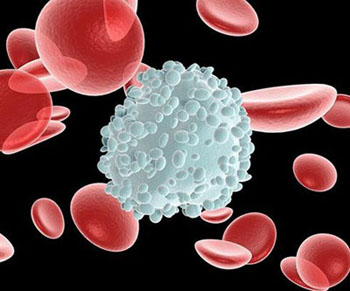
TCM Perspective On
White Blood Cell DisorderWhite blood cell disorder in TCM belongs to the category of "consumptive disease" or "deficiency of blood" according to its clinical manifestations. In pathogenesis, it has a great deal to do with the yang deficiency of the heart, liver, spleen, and kidney. It's particularly close relations to spleen and kidney. The cause of the disease is the depletion of spleen and kidney. In addition, some other factors may be the causes of white blood cell disorder, for instance, radiotherapy, chemotherapy, extensive use of hemical agent, improper diet, overstrain, etc.
According to the theory of traditional
Chinese medicine, the spleen is the root of acquired constitution. Spleen is the source of qi and blood. The kidney is the origin of congenital constitution. kidney is where the vital essence of the human body stores. So, the deficiency of spleen and kidney is the actual cause of white blood cell disorder. Therefore, tonifying spleen and kidney, reinforcing qi and nourishing blood is necessary and important when treating this disease in TCM.
Western Point of View
White blood cells (leukocytes) are an important part of the body’s defense against infectious organisms and foreign substances. To defend the body adequately, a sufficient number of white blood cells must receive a message that an infectious organism or foreign substance has invaded the body, get to where they are needed, and then kill and digest the harmful organism or substance. Like all blood cells, white blood cells are produced in the bone marrow. They develop from stem (precursor) cells that mature into one of the five major types of white blood cells:
Neutrophils
Lymphocytes
Monocytes
Eosinophils
Basophils
Normally, people produce about 100 billion white blood cells a day. The number of white blood cells in a given volume of blood is expressed as cells per microliter of blood. The total white blood cell count normally ranges between 4,000 and 11,000 cells per microliter. The proportion of each of the five major types of white blood cells and the total number of cells of each type can also be determined in a given volume of blood.
Too few or too many white blood cells indicates a disorder.
Leukopenia, a decrease in the number of white blood cells to fewer than 4,000 cells per microliter of blood, frequently makes people more susceptible to infections. Leukocytosis, an increase in the number of white blood cells to more than 11,000 cells per microliter of blood, may result from the normal response of the body to help fight an infection. However, an increase in the number of white blood cells can also result when the regulation of white blood cell development is disrupted and immature or abnormal cells are released into the blood.
Some white blood cell disorders involve only one of the five types of white blood cells. Other disorders may involve a few types together or all five types. Disorders of neutrophils and disorders of lymphocytes are the most common. Disorders that involve monocytes and eosinophils are less common, and disorders involving basophils are rare.